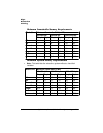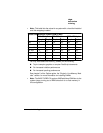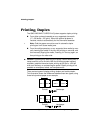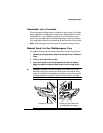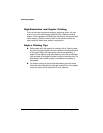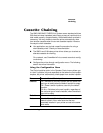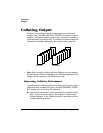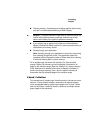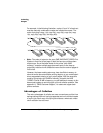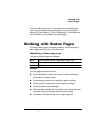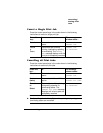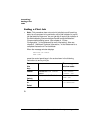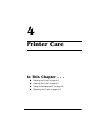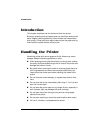
&ROODWLQJ
2XWSXW
$GYDQFHG3ULQWLQ J)HDWXUHV
Take any memory, if available and not being used by other clients,
and add it to Administration/Memory/K Mem Display.
▲ Caution:
This option should be used only by individuals who are
familiar with adjusting memory settings. Incorrect use of this
option could cause your system to operate incorrectly.
If your printer has an optional hard disk and if Administration/
Memory/Enable Disk Swap is set to On, then any extra memory is
distributed to all memory clients.
Collate through your application.
»Note:
Collating through your application is more time consuming
than collating through the printer. The application sends the
complete job the requested number of times rather than sending
it once and holding data in printer memory.
For a multiple-copy document with collation On, there must be
enough Display List memory to hold the display list blocks for all
pages in the collation range. (See the “Display List” memory section
in the
Reference
, for detailed information on display list blocks.) If
there is not enough memory, then a chunk collation boundary is
forced after the last compiled page of the collation range.
&KXQN&ROODWLRQ
This mechanism of introducing a forced boundary is known as chunk
collation. Chunk collation breaks a document into several smaller,
more manageable sets by gathering the pages into “chunks.” When
each set is printed, it frees up memory resources to compile subse-
quent pages of the document.




